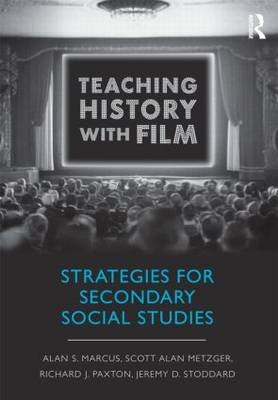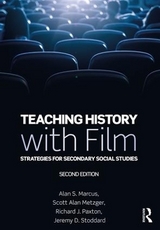
Teaching History with Film
Routledge (Verlag)
978-0-415-99956-4 (ISBN)
- Titel erscheint in neuer Auflage
- Artikel merken
Visit any school in the United States and chances are that you will find at least one of the social studies teachers showing a film about history. Along with the textbook, movies are one of the most prominent teaching aids in the history classroom. Yet, when middle and high school history teachers look for models of the effective use of motion pictures in history classrooms, the cupboard is surprisingly bare. Teaching History with Film provides a fresh, engaging, and clear overview of teaching with film to effectively enhance social studies instruction. Using cases of experienced teachers to illustrate accomplished history teaching through the use of movies, this text provides pre- and in-service teachers with ideas for implementing film-based lessons in their own classrooms and offers a deeper understanding of the thorny issues involved in using film to teach history.
Each section of the book focuses on how teachers can effectively support the development of students’ historical film literacy through topics such as using film to develop historical empathy, to develop interpretive skills, and to explore controversial issues. By developing the skills students need to think critically about the past or what they think they know about history, the lessons in this book illustrate how to harness the pedagogical power of film to provide the tools necessary for rigorous inquiry and democratic citizenship.
Special features include:
"Reflection on the Case," following each chapter, analyzing and discussing the strengths and limitations of the teacher’s approach as well as providing strategies for using and choosing films specific to the educational outcome
Sample unit outlines, descriptions of class texts and films, worksheets, essay questions, viewer guides, and exercises for the classroom throughout
Discussion of the practical considerations facing classroom teachers, including juggling time restraints, issues of parental permission, and meeting standards
Alan S. Marcus is an Associate Professor in the Department of Curriculum & Instruction in the Neag School of Education at the University of Connecticut. Scott Alan Metzger is an Assistant Professor in the Department of Curriculum and Instruction at the Pennsylvania State University at University Park. Richard J. Paxton is the Thomas S. Thompson Distinguished Professor of Education at Pacific University, Oregon. Jeremy D. Stoddard is an Assistant Professor in the School of Education at the College of William & Mary.
Part I: Using Film to Teach History
1. Introduction
2. Issues in Using Film to Teach History
Part II: Using Film to Develop Empathy
3. Empathy for Caring
4. Using Film to Develop Empathy as Perspective Recognition
Part III: Using Film to Develop Analytical or Interpretive Skills
5. Movies as Primary Documents
6. Using Film as a Secondary Source
Part IV: Using Film to Teach About Controversial Issues
7. Using Film to Teach about Contemporary Controversial Issues
8. Using Film to Teach Controversial Issues in History
Part V: Using Film to Visualize the Past and Film as Historical Narrative
9. Using Film to Visualize the Past
10. Using Film as Historical Narrative
| Zusatzinfo | Following Electronic & Experimental Music; 10 Halftones, black and white; 43 Tables, black and white |
|---|---|
| Verlagsort | London |
| Sprache | englisch |
| Maße | 178 x 254 mm |
| Gewicht | 386 g |
| Themenwelt | Schulbuch / Wörterbuch ► Unterrichtsvorbereitung |
| Sozialwissenschaften ► Pädagogik ► Schulpädagogik / Sekundarstufe I+II | |
| ISBN-10 | 0-415-99956-1 / 0415999561 |
| ISBN-13 | 978-0-415-99956-4 / 9780415999564 |
| Zustand | Neuware |
| Informationen gemäß Produktsicherheitsverordnung (GPSR) | |
| Haben Sie eine Frage zum Produkt? |
aus dem Bereich



